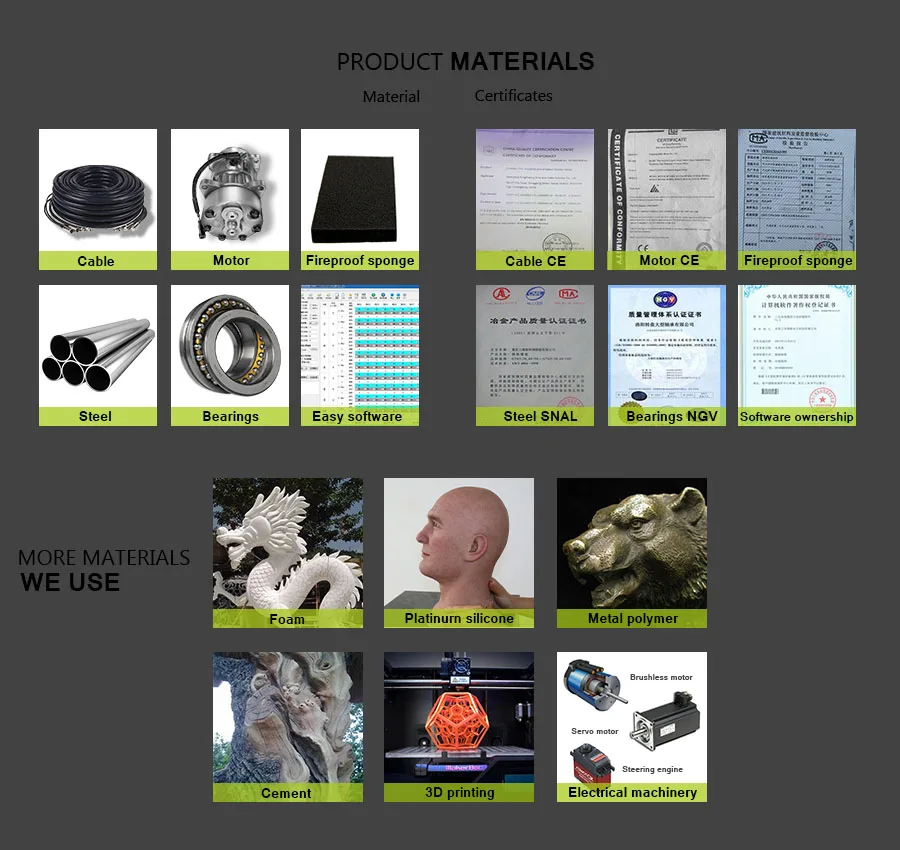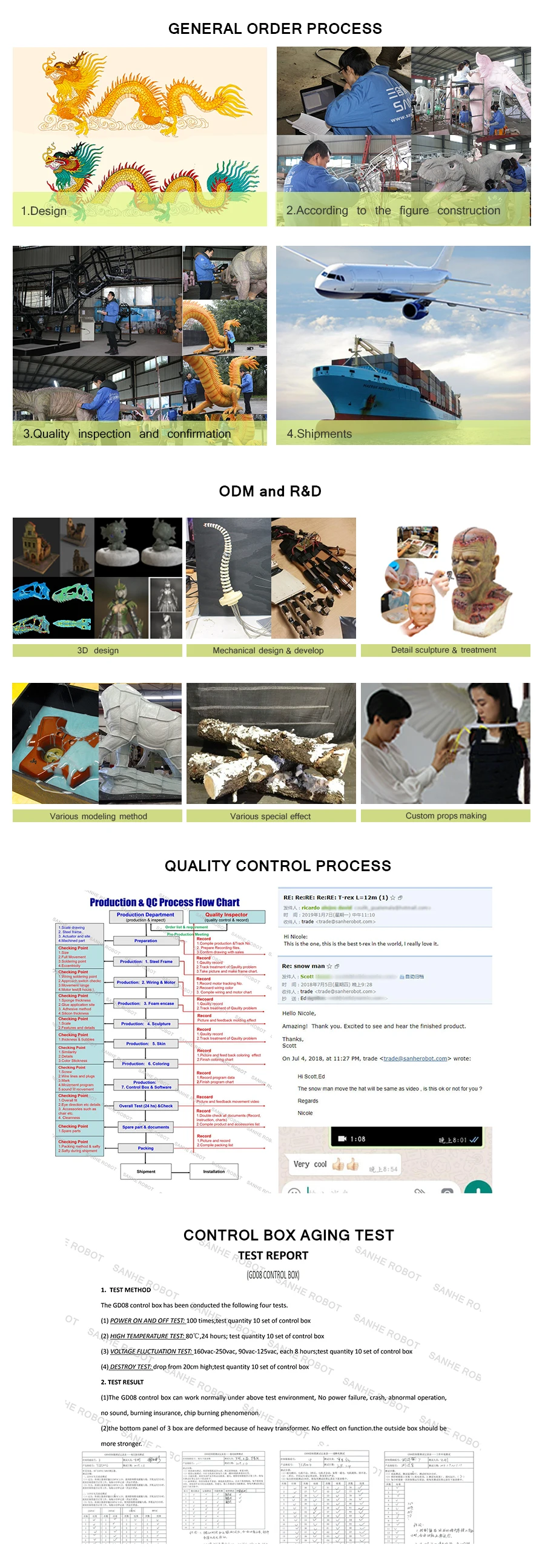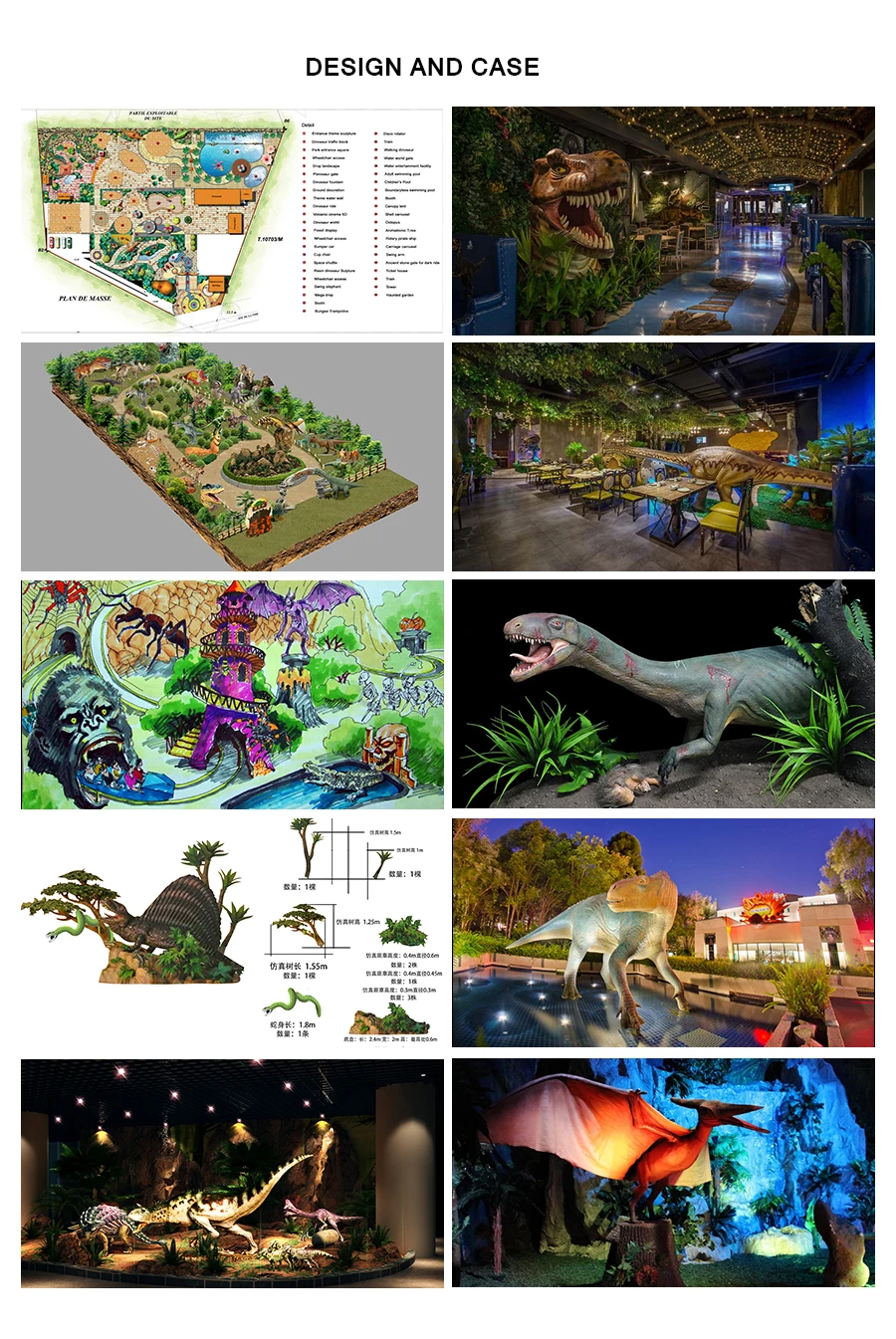Park animal sculpture realistic silicone animal Elasmotherium model for sale


MORE INFORMATION
| Input | AC 110/220V ,50-60HZ |
| Plug | Euro plug / British Standard / SAA / C-UL / or depends on request |
| Control mode | Automatic / Infrared / remote / coin / Button / Voice / Touch / Temperature / shooting etc. |
| Waterproofing grade | IP66 |
| Working condition | Sunshine, rain, seaside, 0~50℃(32℉~82℉) |
| Optional function | Sound can be increased to 128 kinds Smoke,/ water. / bleed / smell / change color / change lights / LED screen etc interactive(Location tracking) / conversine(currently only Chinese) |
AFTER-SALE SERVICE
| Service | Need be cut for shipping,fwill provide a detailed installation manual. |
| Warranty | We provide 2 years warranty for all of our antrimatronic models, the warranty pieriod starts from freight arrives at destination port. Our warranty covers motor, reducer, control box, etc. |






 statue sculpture amusement park product silicon rubber sculpture
simulation robot animals robotic animal model theme park robotic animal animal model lifelike animal model animal model for park robotic animal model statue animatronics animated life size animals animatronic life size animals animatronic prehistoric animals outdoor playground life size animal life size animal sculptures for playground custom life size animal artificial animatronic animal
Elasmotherium is an extinct genus of large rhinoceros endemic to Eurasia during the Late Pliocene through the Pleistocene, existing from 2.6 Ma to at least as late as 39,000 years ago in the Late Pleistocene. A more recent date of 26,000 BP is considered less reliable. It was the last surviving member of Elasmotheriinae, a distinctive group of rhinoceroses that had separated from the ancestry of living rhinoceroses by at least 35 million years ago according to fossils and estimated around 47.4 million years ago based on molecular clock.
Four species are recognised, which were largely confined to the Pontic–Caspian steppe, the Caucasus and Central Asia. The best known, E. sibiricum, known as the Siberian unicorn, was the size of a mammoth and is thought to have borne a large, thick horn on its forehead. Like all rhinoceroses, elasmotheres were herbivorous. Unlike any other rhinos and any other ungulates aside from some notoungulates, its high-crowned molars were ever-growing, and it was likely adapted for a grazing diet. Its legs were longer than those of other rhinos and were adapted for galloping, giving it a horse-like gait.
Elasmotherium was first described in 1809 by German/Russian palaeontologist Gotthelf Fischer von Waldheim based on a left lower jaw, four molars, and the tooth root of the third premolar, which was gifted to Moscow University by princess Ekaterina Dashkova in 1807. He first announced it at an 1808 presentation before the Moscow Society of Naturalists. The genus name derives from Ancient Greek elasmos "laminated" and therion "beast" in reference to the laminated folding of the tooth enamel; and the species name sibericus is probably a reference to the predominantly Siberian origin of princess Dashkova's collection. However, the specimen's exact origins are unknown. In 1877, German naturalist Johann Friedrich von Brandt placed it into the newly erected subfamily Elasmotheriinae, separate from modern rhinos. In 1997, the McKenna/Bell classification considered Elasmotherium to be closely related to the wooly and modern rhinos, and placed it into the subfamily Rhinocerotinae. A complete mitochondrial genome obtained from a specimen of E. sibiricum vindicated von Brandt, finding it to be the sister taxon to all living rhinoceroses, with an estimated divergence time of 47.4 million years ago, with a 95% highest posterior density of 41.9–53.2 Ma
statue sculpture amusement park product silicon rubber sculpture
simulation robot animals robotic animal model theme park robotic animal animal model lifelike animal model animal model for park robotic animal model statue animatronics animated life size animals animatronic life size animals animatronic prehistoric animals outdoor playground life size animal life size animal sculptures for playground custom life size animal artificial animatronic animal
Elasmotherium is an extinct genus of large rhinoceros endemic to Eurasia during the Late Pliocene through the Pleistocene, existing from 2.6 Ma to at least as late as 39,000 years ago in the Late Pleistocene. A more recent date of 26,000 BP is considered less reliable. It was the last surviving member of Elasmotheriinae, a distinctive group of rhinoceroses that had separated from the ancestry of living rhinoceroses by at least 35 million years ago according to fossils and estimated around 47.4 million years ago based on molecular clock.
Four species are recognised, which were largely confined to the Pontic–Caspian steppe, the Caucasus and Central Asia. The best known, E. sibiricum, known as the Siberian unicorn, was the size of a mammoth and is thought to have borne a large, thick horn on its forehead. Like all rhinoceroses, elasmotheres were herbivorous. Unlike any other rhinos and any other ungulates aside from some notoungulates, its high-crowned molars were ever-growing, and it was likely adapted for a grazing diet. Its legs were longer than those of other rhinos and were adapted for galloping, giving it a horse-like gait.
Elasmotherium was first described in 1809 by German/Russian palaeontologist Gotthelf Fischer von Waldheim based on a left lower jaw, four molars, and the tooth root of the third premolar, which was gifted to Moscow University by princess Ekaterina Dashkova in 1807. He first announced it at an 1808 presentation before the Moscow Society of Naturalists. The genus name derives from Ancient Greek elasmos "laminated" and therion "beast" in reference to the laminated folding of the tooth enamel; and the species name sibericus is probably a reference to the predominantly Siberian origin of princess Dashkova's collection. However, the specimen's exact origins are unknown. In 1877, German naturalist Johann Friedrich von Brandt placed it into the newly erected subfamily Elasmotheriinae, separate from modern rhinos. In 1997, the McKenna/Bell classification considered Elasmotherium to be closely related to the wooly and modern rhinos, and placed it into the subfamily Rhinocerotinae. A complete mitochondrial genome obtained from a specimen of E. sibiricum vindicated von Brandt, finding it to be the sister taxon to all living rhinoceroses, with an estimated divergence time of 47.4 million years ago, with a 95% highest posterior density of 41.9–53.2 Ma

+86-813-2104677

info@sanherobot.com

+86-13990010824

No.13 Huixin Road, Yantan Town, Yantan District, Zigong City, Sichuan Province, China